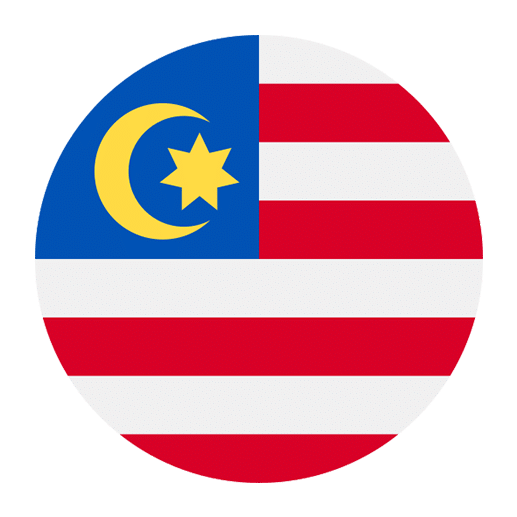The Malay language, known locally as Bahasa Melayu, is a major language in Southeast Asia, boasting over 77 million native speakers. It is the national language of Malaysia, Brunei, and Indonesia (where it is referred to as Bahasa Indonesia), and also spoken in Singapore and parts of Thailand. However, what makes Malay particularly fascinating is its rich tapestry of dialects and regional variations. These variations provide a glimpse into the culture, history, and social dynamics of the regions where Malay is spoken. Understanding these dialects not only enriches one’s linguistic knowledge but also offers deeper insights into the socio-cultural fabric of Southeast Asia.
Historical Context and Spread of Malay
The Malay language has a long and storied history, stretching back over a thousand years. Its earliest known inscriptions date from the 7th century and were found in Sumatra and the Malay Peninsula. The expansion of the Malay language was significantly influenced by the spread of Islam in the region, the establishment of the Malacca Sultanate in the 15th century, and later by European colonial powers.
The Malacca Sultanate, in particular, played a crucial role in the dissemination of Malay as a lingua franca throughout the Malay Archipelago, due to its strategic position along major maritime trading routes. This widespread use of Malay set the stage for the development of various dialects as the language interacted with local languages and cultures.
Understanding Dialects and Regional Variations
In linguistics, a dialect is a particular form of a language that is peculiar to a specific region or social group. Dialects can differ from each other in terms of vocabulary, grammar, and pronunciation. In the case of Malay, the language exhibits significant regional variation, which can be broadly categorized into Peninsular Malay, Indonesian Malay, Bornean Malay, and various creole forms.
Peninsular Malay
Peninsular Malay refers to the dialects spoken in Peninsular Malaysia and parts of southern Thailand. Within Peninsular Malay itself, there are numerous sub-dialects, each with its own unique features. Notable examples include:
1. Johor-Riau Malay: This dialect is often considered the standard form of Malay in Malaysia and Singapore. It serves as the basis for formal Malay language education and is used in official communications and media.
2. Kelantanese Malay: Spoken in the northeastern state of Kelantan, this dialect is known for its distinct phonological and lexical characteristics that set it apart from standard Malay. For instance, the word for “go” in standard Malay is “pergi,” but in Kelantanese Malay, it is “gi.”
3. Terengganu Malay: Similar to Kelantanese, the Terengganu dialect has its own unique set of phonetic and lexical features. It is spoken in the state of Terengganu and is known for its melodic intonation.
4. Northern Malay: Found in the states of Kedah, Perlis, and Penang, Northern Malay has influences from Thai due to the geographical proximity to Thailand. This dialect also features unique vocabulary and pronunciation.
Indonesian Malay
Indonesian Malay, or Bahasa Indonesia, is the official language of Indonesia. While it shares a common root with Peninsular Malay, it has undergone significant evolution due to Indonesia’s diverse linguistic landscape, which includes over 700 languages. As a result, Indonesian Malay has absorbed a variety of loanwords and grammatical structures from other local languages.
1. Betawi Malay: Spoken in Jakarta, Betawi Malay is a creole that has its roots in the Malay spoken by the early settlers of Batavia (now Jakarta). It has been heavily influenced by Javanese, Sundanese, Chinese, and Dutch.
2. Manado Malay: This dialect is spoken in the Manado region of North Sulawesi. It has significant lexical and phonological differences from standard Indonesian, incorporating elements from local languages like Minahasan.
3. Ambonese Malay: Found in the Maluku Islands, Ambonese Malay is another creole that developed during the colonial period. It includes many Portuguese and Dutch loanwords and differs considerably from standard Indonesian in terms of pronunciation and vocabulary.
Bornean Malay
Borneo, the third-largest island in the world, is divided among Malaysia, Indonesia, and Brunei. Each of these regions has its own variations of Malay.
1. Brunei Malay: The official language of Brunei, this dialect is quite distinct from both Peninsular and Indonesian Malay. It includes unique vocabulary and phonological traits. For example, the word for “house” in standard Malay is “rumah,” but in Brunei Malay, it is “umah.”
2. Sarawak Malay: Spoken in the Malaysian state of Sarawak, this dialect features a mix of standard Malay and local indigenous languages. It is known for its distinct intonation and vocabulary.
3. Sabah Malay: Found in the Malaysian state of Sabah, this dialect is influenced by various local languages, including Kadazan-Dusun and Bajau. It is often considered more relaxed and colloquial compared to standard Malay.
Malay Creoles
Creole languages are stable, natural languages that develop from the mixing of parent languages. In the Malay context, several creoles have emerged due to historical trade, colonization, and migration.
1. Baba Malay: Also known as Peranakan Malay, this creole is spoken by the Peranakan Chinese community in Malaysia and Singapore. It combines elements of Malay and Hokkien, a Chinese dialect.
2. Chavacano: Spoken in the Philippines, particularly in the Zamboanga region, Chavacano is a Spanish-based creole that incorporates significant Malay vocabulary.
3. Sri Lankan Malay: This creole is spoken by the Malay community in Sri Lanka, combining elements of Malay, Sinhalese, and Tamil.
Cultural and Social Implications of Malay Dialects
The diversity of Malay dialects is not just a linguistic phenomenon but also a reflection of the rich cultural and social tapestry of the regions where Malay is spoken.
1. Identity and Community: Dialects often serve as markers of identity and community. For instance, speaking a particular dialect can signal one’s regional origin, social class, or ethnic background. In Malaysia, for example, speaking Kelantanese Malay can immediately identify someone as being from Kelantan, fostering a sense of belonging and community.
2. Preservation of Heritage: Dialects play a crucial role in preserving cultural heritage. They carry with them traditional knowledge, folklore, and oral histories that might not be present in the standard language. Efforts to document and preserve these dialects are essential for maintaining cultural diversity.
3. Social Dynamics: The use of different dialects can also reflect social dynamics and power relations. In some cases, standard Malay is seen as more prestigious and is used in formal settings, while regional dialects are used in informal or intimate contexts. This can create a diglossic situation, where two dialects or languages are used under different conditions within a community.
Challenges and Opportunities for Language Learners
For language learners, the existence of multiple dialects and regional variations in Malay presents both challenges and opportunities.
1. Comprehension: One of the primary challenges is comprehension. Learners who are accustomed to standard Malay might find it difficult to understand regional dialects due to differences in vocabulary, pronunciation, and grammar. Exposure to various dialects through media, travel, and interaction with native speakers can help overcome this challenge.
2. Cultural Insight: Learning about different dialects provides valuable cultural insights. It allows learners to appreciate the cultural richness and diversity of the Malay-speaking world. This cultural competence can be particularly beneficial for those working in multicultural environments or engaging in cross-cultural communication.
3. Enhanced Communication Skills: Familiarity with different dialects can enhance communication skills. It enables learners to adapt their language use to different contexts and audiences, making them more effective communicators. For instance, understanding the nuances of Betawi Malay can be advantageous for someone working in Jakarta.
Strategies for Learning Malay Dialects
Given the diversity of Malay dialects, language learners can adopt several strategies to navigate this linguistic landscape effectively.
1. Immersion: Immersion is one of the most effective ways to learn a dialect. Spending time in a region where a particular dialect is spoken provides first-hand exposure to its unique features. Engaging with native speakers, participating in local activities, and consuming local media can accelerate the learning process.
2. Comparative Study: Conducting a comparative study of different dialects can be enlightening. By comparing and contrasting the features of various dialects, learners can gain a deeper understanding of their similarities and differences. This can involve studying linguistic resources, attending workshops, or taking courses on dialectology.
3. Use of Technology: Technology offers numerous resources for learning dialects. Language learning apps, online courses, and social media platforms provide access to a wealth of materials and communities dedicated to different Malay dialects. Engaging with these resources can supplement traditional learning methods.
4. Cultural Exchange Programs: Participating in cultural exchange programs or language exchange partnerships can provide practical experience in using different dialects. These programs offer opportunities to interact with native speakers, learn about their cultural practices, and practice language skills in real-life contexts.
The Future of Malay Dialects
The future of Malay dialects is shaped by various factors, including globalization, urbanization, and technological advancement. While some dialects may face challenges due to the dominance of standard Malay and other global languages, there are also opportunities for their preservation and revitalization.
1. Documentation and Preservation: Efforts to document and preserve Malay dialects are crucial for maintaining linguistic diversity. Linguists, cultural organizations, and local communities can collaborate on projects to record and archive dialects, ensuring their transmission to future generations.
2. Education and Awareness: Incorporating dialect education into the formal education system can raise awareness and appreciation of linguistic diversity. Schools can offer courses on regional dialects, promote dialect literature, and encourage students to explore their linguistic heritage.
3. Media and Technology: The media and technology sectors play a significant role in the future of Malay dialects. Producing content in various dialects, such as films, television shows, and online platforms, can increase their visibility and accessibility. Additionally, leveraging technology for language learning and preservation initiatives can reach a broader audience.
In conclusion, the significance of Malay dialects and regional variations extends beyond mere linguistic interest. It encompasses cultural identity, social dynamics, and historical heritage. For language learners, exploring these dialects offers a deeper understanding of the Malay-speaking world and enriches their linguistic and cultural competence. By embracing the diversity of Malay dialects, we not only preserve a vital aspect of Southeast Asian heritage but also celebrate the rich tapestry of human language and culture.

